False Morels? Two Types To Look Out For
Contents
Come spring, the first thing any mushroom hunter thinks about getting outside and hunting down a basket of morel mushrooms.
They’re delicious, easy to identify compared to many wild mushrooms, and are relatively abundant if you know where to look.
But if you are brand new to mushroom hunting, you might have some hesitation…
How can you tell a true morel from a false morel?
Luckily, it’s pretty easy.
The two types of false morels you should know about are Verpa bohemica and Gyromitra esculenta.
The Early Spring False Morel (Verpa Bohemica)
The first time I saw Verpa bohemica from a distance, I was sure that I had spotted the start of the morel of the season.
That’s because this is the one species of false morel that actually does resemble the real deal. Upon closer inspection though, it’s pretty obvious that this mushroom is completely different.
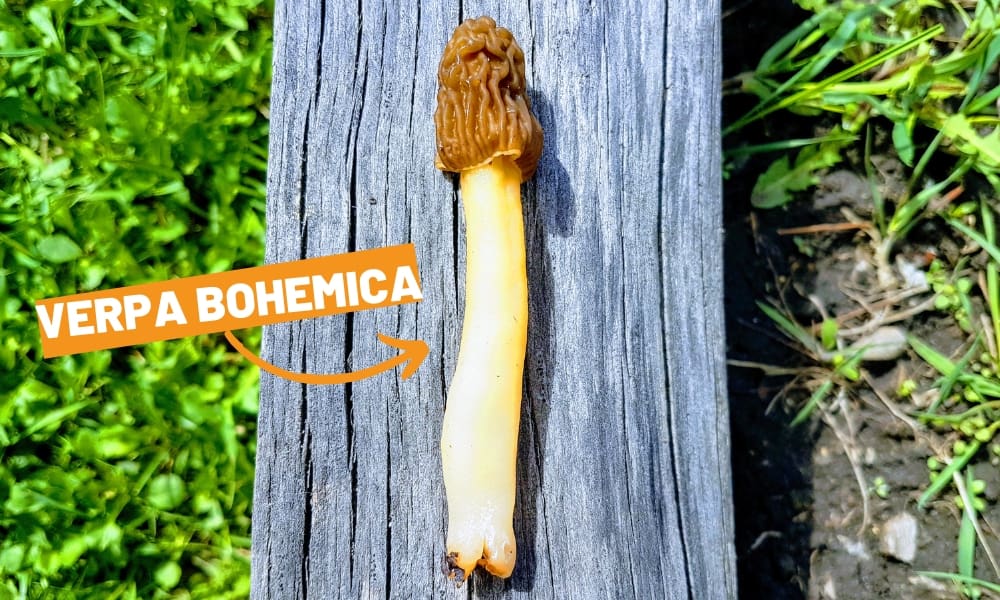
What Does It Look Like?
Verpa bohemica is sometimes referred to as the “Wrinkled Thimble Morel”, because, well… the cap kind of looks like a wrinkled thimble. Unlike morels, which have a “pitted” cap, Verpa bohemica has brain-like folds which are dark brown or tan in color.
The flesh itself is quite delicate, and easily deteriorates with handling. This mushroom typically has a thin stem that is white-beige in color.
The easiest way for beginners to tell that this mushroom is not a true morel is by cutting in half and looking at how the cap attaches to the stem. Unlike morels, Verpa bohemica has a cap that is only attached at the very top of the stem. The rest of the cap hangs down like a skirt, also known as a “free hanging” cap.
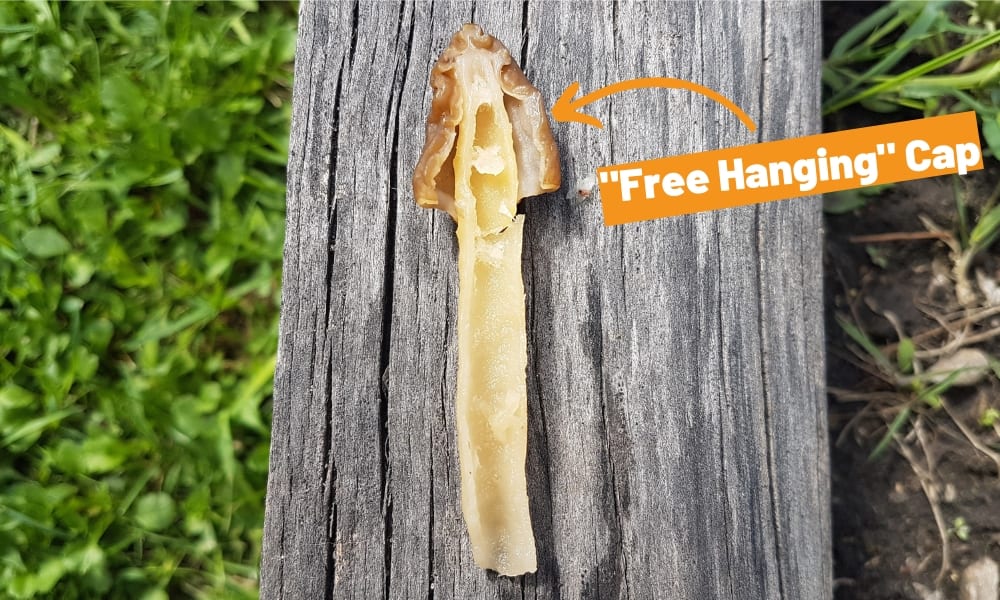
Where Does It Grow?
Verpa bohemica grows in boggy areas, ravines, valleys and the edges of ponds. If you see one, look around, because there is likely to be many more. I have sometimes seen dozens of specimens fruiting simultaneously.
This mushroom usually appears a couple of weeks earlier than true morels. Of course, the exact time of year depends on where you live. In Alberta, Verpa bohemica shows up in early May.
Is Verpa Bohemica Edible?
This topic seems to be hotly debated, with many foragers quite happy to harvest and cook up Verpa bohemica. Personally, I don’t think its worth it.
There are plenty of reports of gastro-inenstinal distress and issues with muscular coordination. Plus, they apparently don’t hold a candle to the flavor and texture of real morels.
If you really want to avoid the warnings and try them anyways, make sure you cook them- and only eat them in very small amounts.
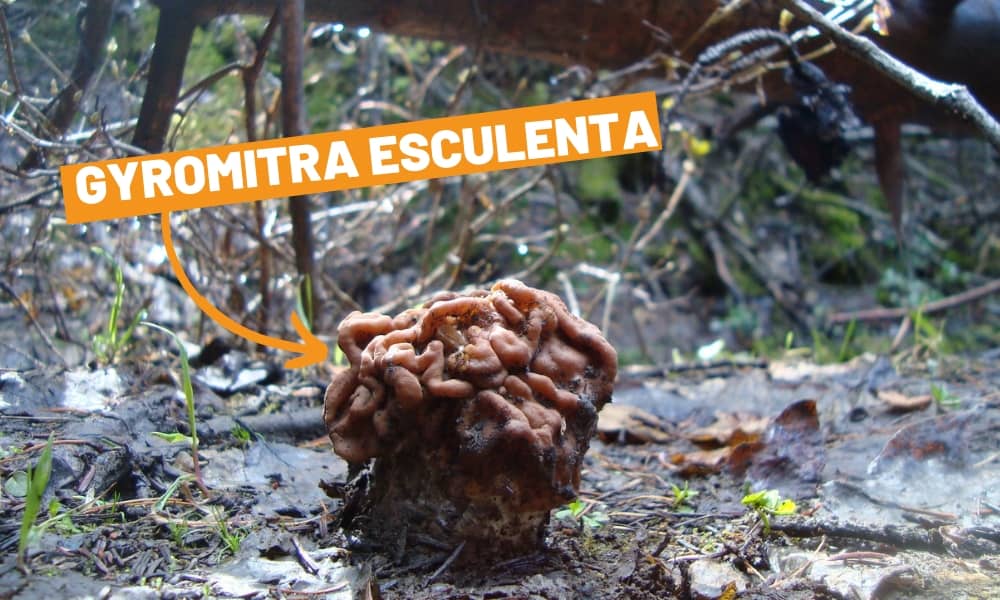
The Deadly False Morel (Gyromitra esculenta)
Calling Gyromitra esculenta a false morel mushroom is kind of a misnomer… because it doesn’t really look like a morel at all.
Still, it grows in a similar habitat and same time of year as true morels, and I guess could be misidentified as a morel if you really had no idea what you were looking for.
The likely reason why this species gets so much attention is because it can contains a poisonous and potentially deadly chemical. That being said, some people do actually eat this mushroom with no ill effects. In fact, it’s even sold in some food markets in Europe.
What Does It Look Like?
Gyromitra esculenta has a large brain-like folds that are reddish-brown or maroon in color. The cap is never deeply pitted, which is the best way to quickly identify it as a non-morel.
It is often “saddle shaped”, but sometimes just looks like a big brainy blob.
The stalk is smooth, white and grooved. This mushroom can get quite large in size.
Where Does It Grow?
This false morel most often grows under conifers in mountainous regions in the United States and Canada, but can be found in many of the same habitats as true morels.
If you go morel hunting, there’s a really good chance that you’ll end up running into some type of Gyromitra species.
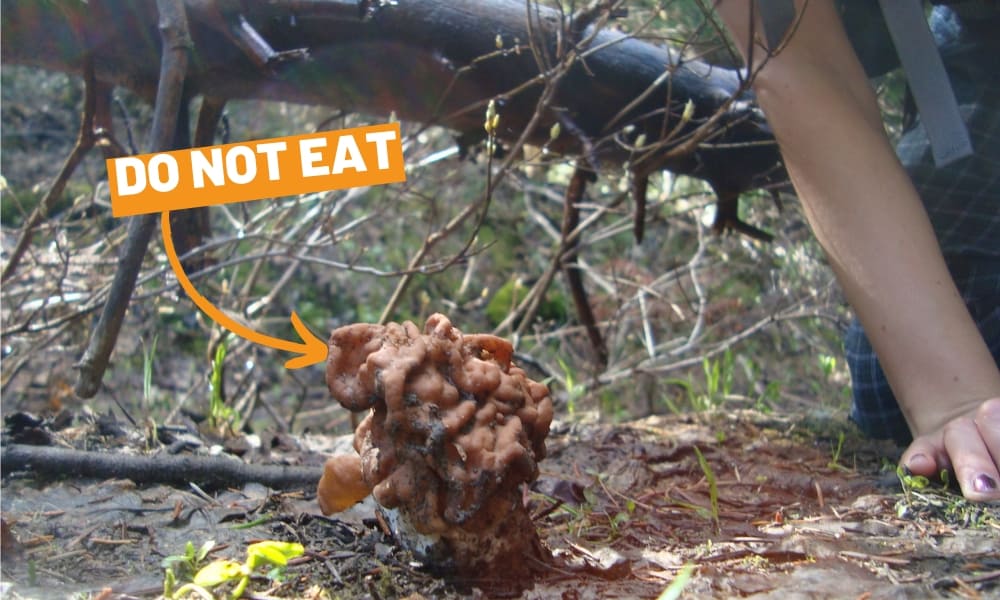
Is Gyromitra esculenta Poisonous?
Absolutely yes- but the level of risk seems to depend on both where the mushroom grows and how it was processed.
Gyromitra esculenta contains monomethylhydrazine (MMH), which is the exact same chemical in rocket fuel, and the reason why you shouldn’t be eating it.
MMH is an extremely volatile chemical. Cooking or drying the mushroom could be enough to remove the toxin and render the mushroom suitable for eating.
Another reason why some people are able to eat this mushroom is because there seems to be a certain level of MMH that can be safely absorbed by the human body, and some threshold level is required before you’ll see acute effects.
It’s also likely that the amount of MMH contained in the mushroom varies wildly depending on where it grows.
Species found in Europe (where it is often found in markets) might have much lower levels of MMH than those found in North America.
The bottom line: this mushroom has the potential to literally kill you, so it’s hardly worth the risk. Don’t eat it.
If for some crazy reason you absolutely have to try this mushroom, be sure to either dry it out completely before cooking, or boil it thoroughly. Be sure not to inhale the vapor from the pot. Also, never eat a large amount, no matter how it is processed.
Or, just don’t eat them, ever. I’m not a “fungiphobe” but when it comes to potentially deadly mushrooms, I like to play it safe.
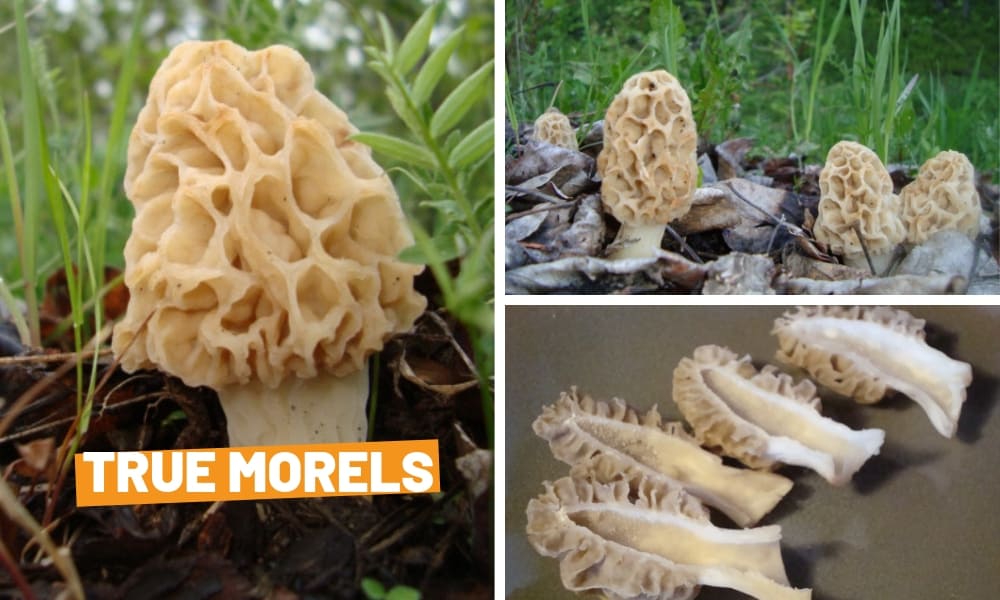
How To Identify True Morels
So what does a true morel actually look like?
Morels are one of the most easily identifiable of the edible mushrooms in the woods. Once you’ve seen one, it’s hard to ever go wrong- and you are pretty unlikely to mistake it for one of the poisonous mushrooms.
They typically grow in the spring, but can be found all through the summer and even in the fall depending on where you live. There are plenty of different species of morels (burn morels, black morels, yellow morels) but to most, the distinction is not that important.
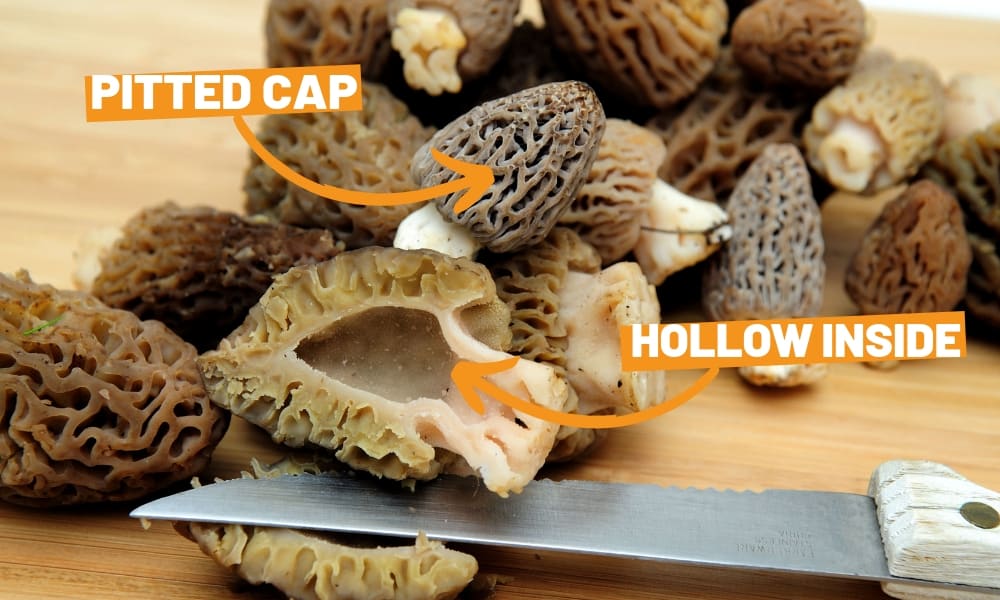
The most common feature of a true Morel is it’s “deeply pitted” or “honeycomb like” cap, instead of the brain-like folds of the false morels. They also have hollow centers, with the cap and the stem connecting as one at the base. The stalk is typically quite thick, but not grooved like in the case of Gyromitra.
If you find a mushroom that you think is a morel, first make sure that it has the trademark “honeycomb” cap. If that’s true, cut it in half to see how the cap attaches to the stem, and to ensure that it hollow inside. If both of those things are true, it’s almost a guarantee that you have a true morel.
If you still aren’t sure, go foraging with your local mycological society or trusted friend.
When hunting wild mushrooms, you want to be 100% sure that you know what you have.
Morels should never be eaten raw, since they can cause serious digestive upset if not cooked properly. Also, be sure to inspect your morels for bugs, slugs, and other creepy crawlers.
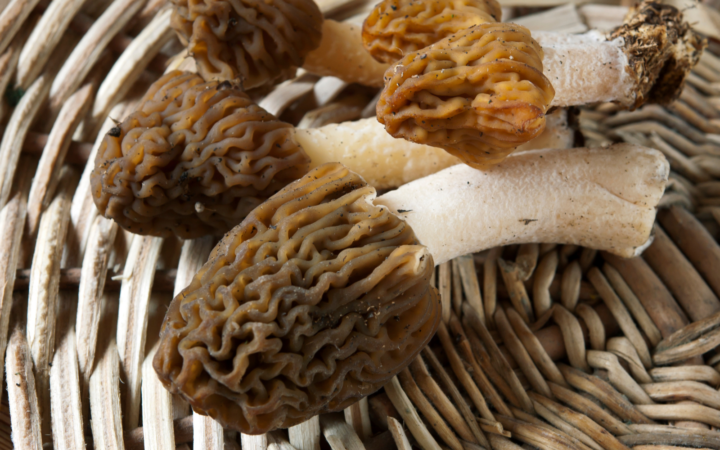
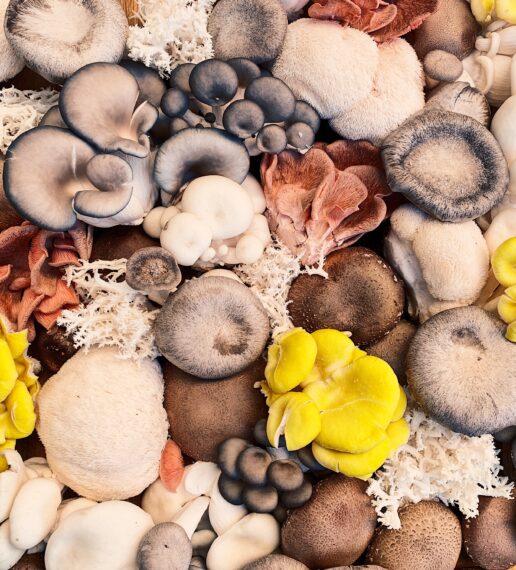

Great article, thank you! I think I have a true morel growing under my lavender! Will cut in half to confirm. Exciting! Ella